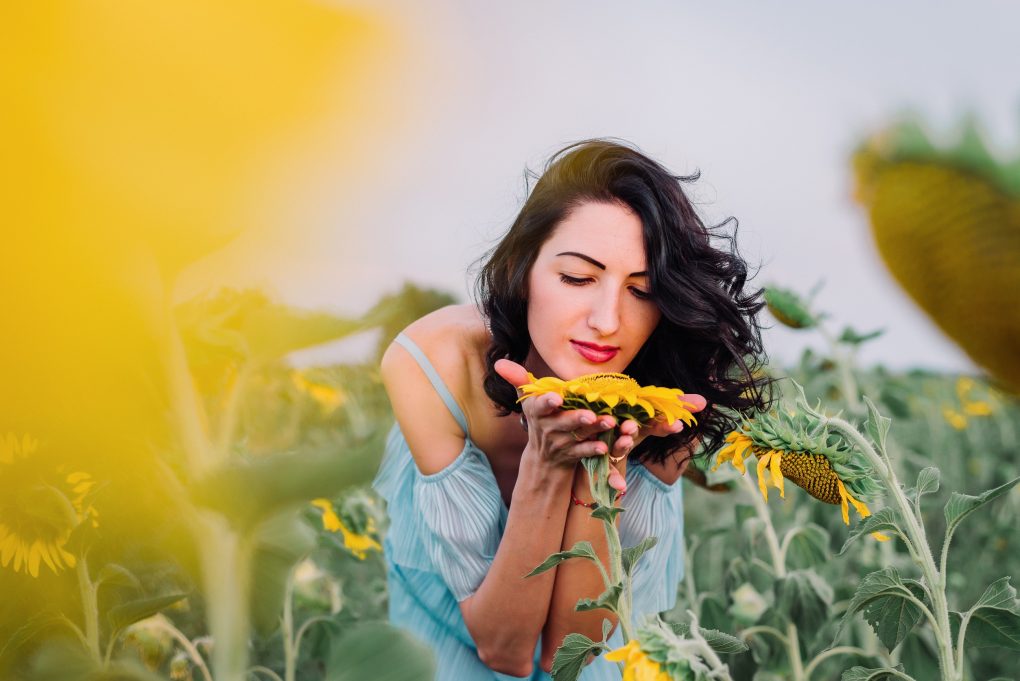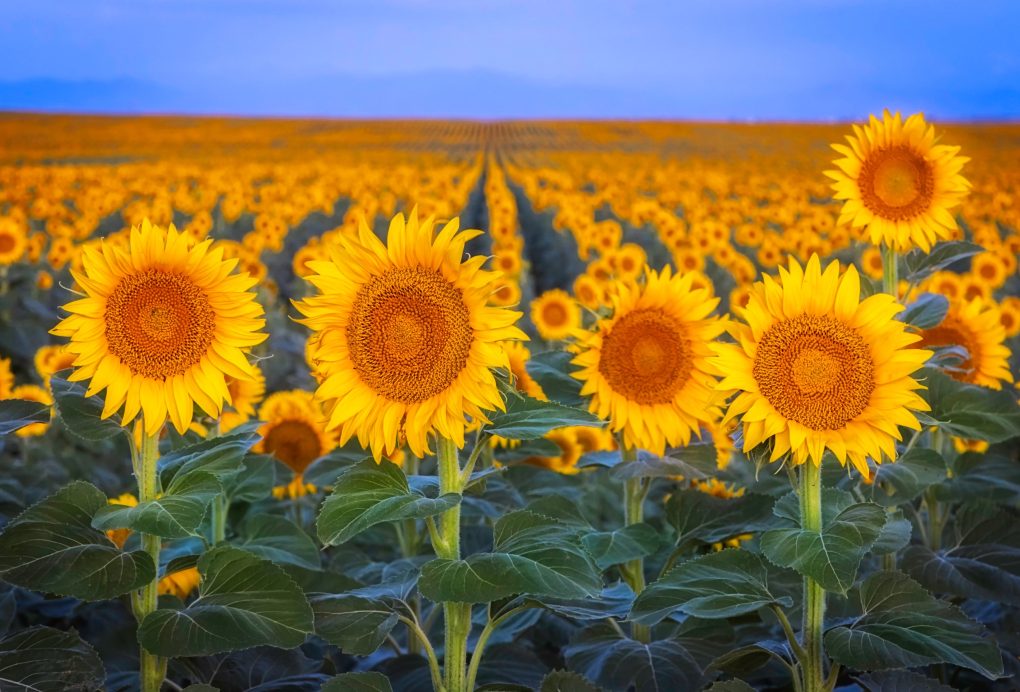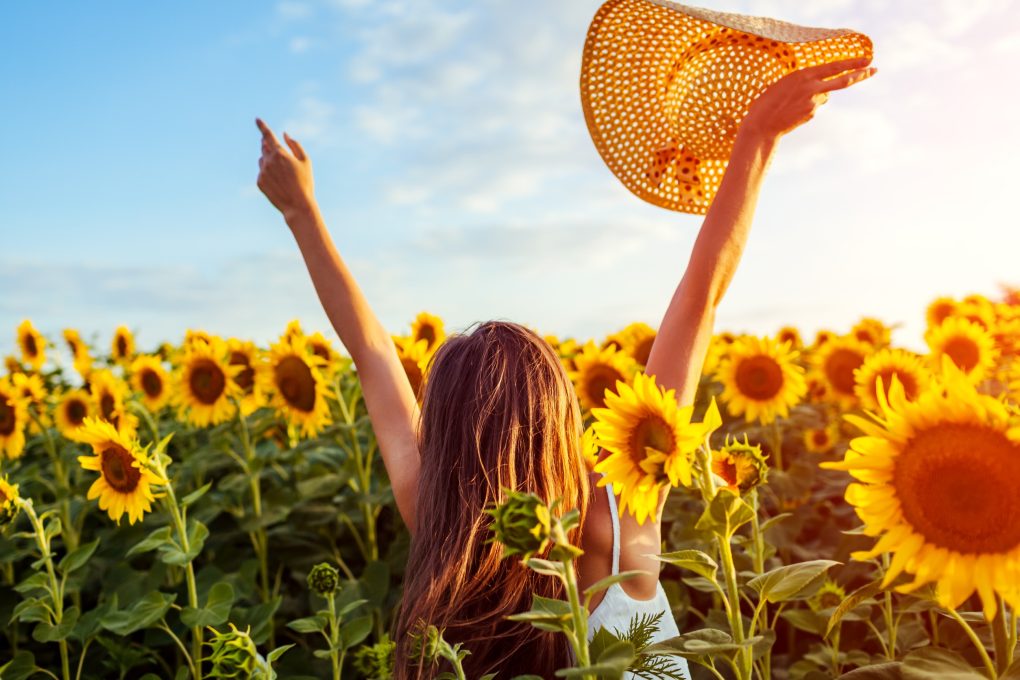When Does Sunflower Bloom? A Guide To The Bloom Period
Annual sunflowers are in bloom from the summer into the fall. You can have continuous blooms up to the first freeze by sowing new plants every few weeks. Perennial sunflowers bloom for eight to twelve weeks, some starting in July and some not finishing until October. These tall flowers are pollinator magnets. Their bright and vibrant petals attract bees, butterflies, and other pollinators to the garden. Their flowers typically last three weeks but may extend to a month. Sunflowers are easy to care for if grown in a garden or potted plant. They require little maintenance and thrive in full sun or partial shade. They can be planted in flower beds, natural spaces, and window boxes to help attract pollinators to the garden.

In North America, the annual sunflower is a natural plant. In 1000 B.C., it is said to have been domesticated from a wild sunflower, in what is currently western America. The sunflower is a plant of the Aster family. It is an annual plant that flowers and dies after one season. Like most flowering plants, sunflowers flower in the spring and early summer, producing large amounts of colorful yellow or orange petals that dry and release their seeds in the fall. Several varieties of sunflowers are grown for seed oil extraction or seedling production.
Sunflower blooms at different times depending on the region you’re in. In some regions, sunflowers bloom as early as February or March, whereas, in others, they bloom as late as June or July. Fortunately for sunflower enthusiasts, sunflower blooms can be achieved year-round with a little planning and preparation.
Table of Contents
The Stages of the Sunflower Life Cycle
Seed
Sunflower seed is the key component of a sunflower plant. It starts its life cycle with a seed, the starting point of the germination process. After absorbing moisture through its shell, the seedling emerges from the soil and grows. The seedling has two leaves and a thin stem. These leaves absorb sunlight, which is then turned into food for the plant via photosynthesis. As the seedling grows, deeper roots help stabilize it in the soil. Once the roots have been established, a seedling will emerge with a thin stem and two leaves. This step in seedling development marks the beginning of its lifecycle. Overall, sunflower seeds are vital for a successful garden and can provide nutrients and shelter to various wildlife species.
Germination
Sunflower seeds start absorbing moisture through their shells as soon as they are planted. As the seed absorbs water, it develops root-like structures that draw nutrients from the soil. Once the seed has absorbed enough water and nutrients, it will sprout and grow into a seedling with a stem and leaves. Roots will develop from the seed and push through the soil’s surface to find more nutrients. As the seedling grows and develops, it will take on a plant form with flowers, eventually producing mature seeds and seed pods. The sunflower life cycle can take 4 to 10 months to complete, depending on how quickly you plant your seeds in early spring.
As the sunflower seed develops from its seedling stage to mature adult, it will undergo several growth stages that ultimately lead to flowering and the production of seeds. The sunflower seed typically takes 4 to 10 months to complete its life cycle. It is important to note that planting sunflower seeds in the cold season may result in the slow or non-existent growth of seedlings due to the slow germination rate of cold-hardy sunflower varieties. The reproductive phase of the sunflower life cycle begins in June and ends in August or September; this is when the flower heads start turning yellow and releasing pollen into the air.
Seedling

The sunflower life cycle begins with a seed. To begin the life cycle, this seed must first go through the germination process. After germination, the plant enters the vegetative phase and grows rapidly. Once the plant is fully grown, it enters the reproductive phase, with a bud forming between its cluster of leaves. During this phase, the flower’s petals will brighten up and turn yellowish-orange before finally blooming. The bud will typically bloom from July to August, as the sunflower’s flowers bloom for just a few weeks.
Once the flower has bloomed, it slowly dies and falls off the plant. This process is called fall-off. However, many sunflower seeds will remain on the plant after flowering, known as seed pods or seedheads. These seedheads have small flower heads that can be used for floral arrangements or made into natural dyes. Overall, the sunflower life cycle is exciting and requires plenty of patience and attention to ensure success.
Bud
Sunflower buds typically have a star-like appearance at the start of the reproductive phase. Sunflower plants move towards the sunlight to reach optimal growth and development during this time. In the late summer and early fall, sunflower plants enter a period of dormancy where they stop growing. This is known as the seed-growing or seed-storage phase. The reproductive phase occurs when a bud forms between the plant’s cluster of leaves. Eventually, the bud will open to display bright golden petals within five to 10 weeks after planting. During this time, sunflower plants physically move toward the sunlight to achieve their maximum growth potential. The reproductive phase of the sunflower plant life cycle culminates in the emergence of seed pods containing seeds that will eventually grow into new sunflower plants next season.
Full bloom
Start to bloom sunflowers 13 to 15 weeks after planting. As the flowers of sunflower bloom, they attract pollinators such as bees and butterflies, which help the plant reproduce. Sunflowers typically bloom 10 to 13 weeks after planting, lasting up to one to two months in the flowering period. These bright flowers are often used as decoration or for their seed oil. However, sunflower plants also provide many benefits to the ecosystem and can be useful in gardens as food sources or as a source of nutrients.
Once flowering stops, sunflower plants start to wilt 13 to 15 weeks after planting. This is because sunflower seeds need sunlight to germinate and grow. It is wise to place seedlings in direct sunlight or near windows to get enough sunlight for growth. Once seedlings reach maturity, they can be easily transplanted outdoors or used for flower arrangements indoors.
Wilt
The wilting sunflower process typically occurs 13 to 15 weeks after planting. Wilting is the process of the petals turning from bright yellow to rusty brown and the head of the sunflower starting to droop. During this phase, the plant enters the reproductive stage, and a bud forms between the cluster of leaves. This bud eventually bloomed and produced seeds, completing the life cycle of the sunflower. After successfully completing the wilting process, sunflower plants enter the regeneration phase, which can take about 17 weeks after planting. Sunflowers shed their seeds during the regeneration phase and start again in preparation for next year’s planting season.
The life cycle of sunflowers is exceptionally complex and fascinating at every stage. From seed to harvest, sunflowers can regenerate quickly after they suffer damage or are killed off by frost or drought. This makes them excellent candidates for use as seed stock in commercial agriculture or in sustainable farming practices where population numbers must be controlled or maintained over time.
Regeneration or Harvest
Sunflowers are known for their ability to grow rapidly and continuously throughout the year. In fact, sunflower seeds can germinate within four weeks of planting. This fast growth means sunflowers typically regenerate 15 to 17 weeks after planting. The sunflower bloom typically lasts two weeks when the plant produces seed pods. Once the bloom has been completed, the seed pods begin to dry and fall off the plant. The seed pods can be harvested in July or August for early crops or in October for late crops, such as seed or oil production. Harvesting sunflower seeds allow farmers to use them for various purposes, such as cooking or animal feed. As you can see, sunflowers are a useful and dynamic crop with a long life cycle and play an important role in farming communities worldwide.
Harvesting Seeds at the End of the Sunflower Life Cycle

Sunflowers can be harvested for their seeds when the back of the head turns brown. The sunflower life cycle comes to an end with this phenomenon, which is known as the “sunflower bloom.” Sunflower seeds should be harvested at this stage to ensure the greatest seed quality and nutritional value. Rubbing your hand over the blossom’s center may help you extract the seeds. After harvesting, the seeds should be washed and left to dry overnight. The seeds can be roasted at 300 degrees for a stronger, nuttier flavor for half an hour. Sunflower seeds are a popular snack worldwide and are often used in cooking. The sunflower bloom is a vital part of sunflower cultivation and should be noticed by sunflower growers.
How to Preserve Sunflowers
If you’re looking for ways to preserve sunflowers, hanging them in a dark, dry place for three weeks is a good start. This will help preserve the flowers and make them last longer. It’s also possible to dehydrate sunflowers in a solar or electronic drying device, but this option requires extra attention and care.
You can also preserve sunflowers the old-fashioned way by freezing them or canning them. The latter option is the best for preserving their bright color and shape, but it does require some extra work. Here are some tips for canning sunflower seeds: Wash them thoroughly before using them. Half of the sunflower seeds should be boiled in water until softened. Place the sunflower seed in a bowl and add honey or sugar to your liking before allowing it to cool. Fill a jar with hot water and cover it with a sunflower seed mixture. Place the jar in a sunny area and let it sit for 24 hours before checking if the sunflower seed has turned yellow or white.
